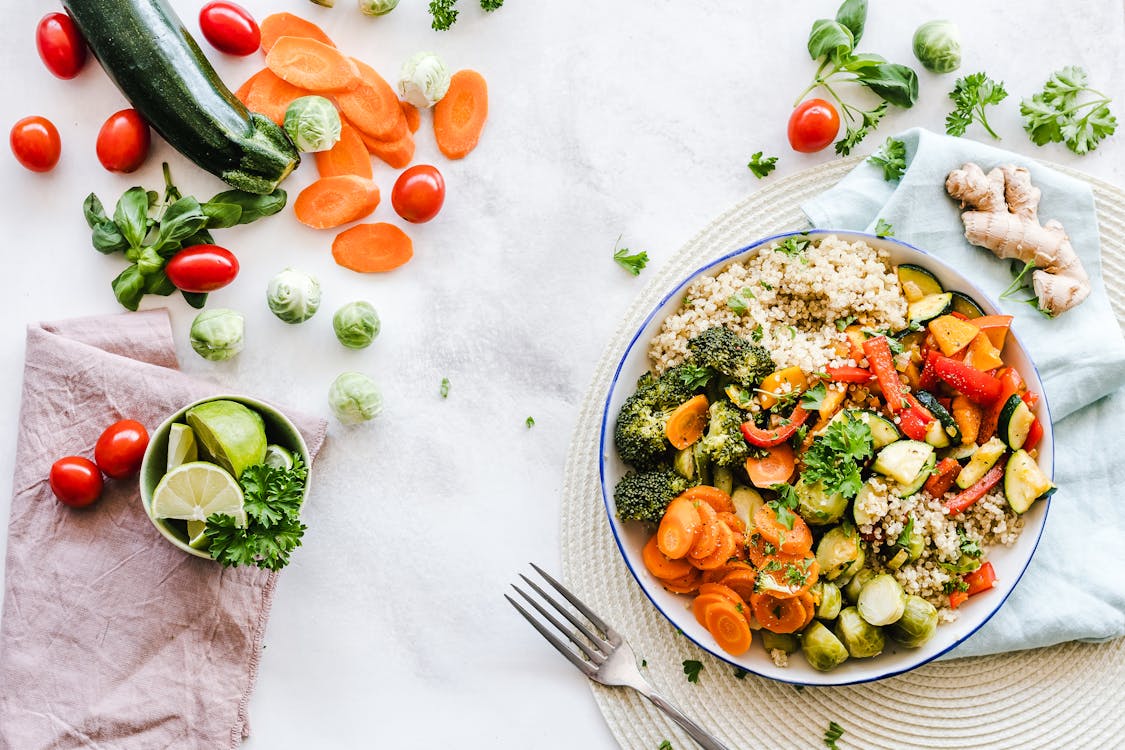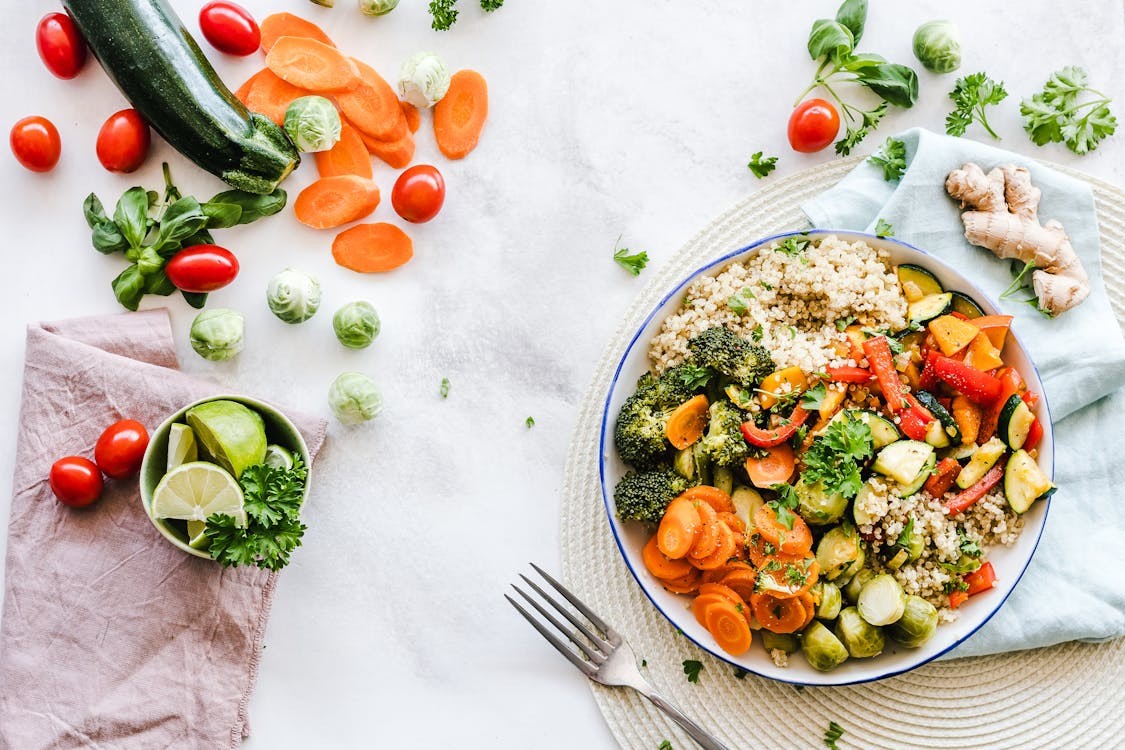At FOODS.EDU.VN, we understand the importance of maintaining healthy blood sugar levels. What Foods Bring Blood Sugar Down is a question many seek to answer, and the solution lies in incorporating strategic dietary choices that promote glycemic control and overall wellness. This guide provides in-depth insights into specific food categories and their impact on blood sugar, offering practical advice for creating a balanced and effective meal plan.
1. Understanding Blood Sugar and Its Importance
1.1. What is Blood Sugar and Why Does It Matter?
Blood sugar, or glucose, is the primary source of energy for the body. It comes from the food we eat and is transported through the bloodstream to cells, where it’s used for fuel. Maintaining stable blood sugar levels is crucial for overall health. When blood sugar levels are consistently high (hyperglycemia) or low (hypoglycemia), it can lead to various health complications. According to the American Diabetes Association, uncontrolled blood sugar can increase the risk of heart disease, kidney disease, nerve damage, and vision problems.
1.2. Factors That Influence Blood Sugar Levels
Several factors influence blood sugar levels, including:
- Diet: The types and amounts of food consumed have a direct impact on blood sugar.
- Physical Activity: Exercise helps lower blood sugar by increasing insulin sensitivity and using glucose for energy.
- Stress: Stress hormones can raise blood sugar levels.
- Medications: Certain medications, such as steroids and some antidepressants, can affect blood sugar.
- Underlying Health Conditions: Conditions like diabetes, insulin resistance, and hormonal imbalances can significantly impact blood sugar control.
Understanding these factors is the first step in managing blood sugar levels effectively.
1.3. The Role of Insulin in Blood Sugar Regulation
Insulin, a hormone produced by the pancreas, plays a vital role in regulating blood sugar. After eating, carbohydrates are broken down into glucose, which enters the bloodstream. Insulin then helps glucose move from the blood into cells for energy. In people with insulin resistance or diabetes, this process is impaired, leading to elevated blood sugar levels. The National Institute of Diabetes and Digestive and Kidney Diseases (NIDDK) emphasizes the importance of insulin in maintaining healthy glucose metabolism.
2. Top Food Categories for Lowering Blood Sugar
2.1. Non-Starchy Vegetables: Nature’s Blood Sugar Regulators
Non-starchy vegetables are low in carbohydrates and calories but high in fiber, vitamins, and minerals. These vegetables have a minimal impact on blood sugar levels and can help improve overall health. The American Diabetes Association recommends filling half your plate with non-starchy vegetables at each meal.
2.1.1. Examples of Non-Starchy Vegetables
- Leafy Greens: Spinach, kale, lettuce, and collard greens.
- Cruciferous Vegetables: Broccoli, cauliflower, Brussels sprouts, and cabbage.
- Other Vegetables: Asparagus, bell peppers, cucumbers, green beans, mushrooms, onions, and zucchini.
2.1.2. Health Benefits and Nutritional Value
Non-starchy vegetables are packed with essential nutrients. For example, spinach is an excellent source of vitamins A and C, as well as iron and magnesium. Broccoli is rich in vitamin C, vitamin K, and fiber. These nutrients contribute to overall health and can help prevent chronic diseases. A study published in the “Journal of the Academy of Nutrition and Dietetics” found that increased consumption of non-starchy vegetables is associated with a lower risk of type 2 diabetes.
2.1.3. Practical Tips for Incorporating Non-Starchy Vegetables
- Add to Meals: Include a side of non-starchy vegetables with every meal.
- Snack Option: Choose raw vegetables like carrots, celery, and cucumber for a healthy snack.
- Soups and Salads: Add non-starchy vegetables to soups and salads for added nutrients and fiber.
- Roasting: Roasting vegetables with herbs and spices can enhance their flavor and make them more appealing.
2.2. Whole Grains: A Fiber-Rich Alternative
Whole grains are a good source of fiber, which helps slow down the absorption of glucose into the bloodstream. Unlike refined grains, whole grains retain their bran, germ, and endosperm, providing a more sustained release of energy and preventing blood sugar spikes. Harvard T.H. Chan School of Public Health recommends choosing whole grains over refined grains to improve blood sugar control and reduce the risk of chronic diseases.
2.2.1. Examples of Whole Grains
- Oats: Steel-cut oats, rolled oats, and oat bran.
- Quinoa: A complete protein and a good source of fiber.
- Brown Rice: A nutritious alternative to white rice.
- Barley: A versatile grain that can be used in soups and salads.
- Whole Wheat: Whole wheat bread, pasta, and crackers.
2.2.2. Health Benefits and Nutritional Value
Whole grains are rich in fiber, B vitamins, magnesium, and iron. Fiber helps regulate blood sugar levels by slowing down the absorption of glucose. B vitamins are essential for energy metabolism, while magnesium and iron play important roles in overall health. A study published in the “American Journal of Clinical Nutrition” found that consuming whole grains is associated with a lower risk of type 2 diabetes and cardiovascular disease.
2.2.3. Practical Tips for Incorporating Whole Grains
- Breakfast Choice: Choose oatmeal or whole-grain cereal for breakfast.
- Bread and Pasta: Opt for whole-wheat bread and pasta instead of white varieties.
- Side Dish: Serve quinoa or brown rice as a side dish.
- Snacks: Choose whole-grain crackers or air-popped popcorn for a healthy snack.
2.3. Legumes: Protein and Fiber Powerhouses
Legumes, including beans, lentils, and chickpeas, are excellent sources of protein and fiber. They have a low glycemic index (GI), meaning they cause a slow and steady rise in blood sugar levels. The GI is a measure of how quickly a food raises blood sugar levels, with lower GI foods being preferable for blood sugar control. The Glycemic Index Foundation provides valuable information on the GI values of various foods.
2.3.1. Examples of Legumes
- Beans: Kidney beans, black beans, pinto beans, and navy beans.
- Lentils: Green lentils, red lentils, and brown lentils.
- Chickpeas: Also known as garbanzo beans.
- Peas: Green peas and split peas.
2.3.2. Health Benefits and Nutritional Value
Legumes are rich in protein, fiber, iron, folate, and potassium. Protein helps keep you feeling full and satisfied, while fiber helps regulate blood sugar levels and promotes digestive health. Iron is essential for oxygen transport, folate is important for cell growth, and potassium helps regulate blood pressure. A study published in the “Archives of Internal Medicine” found that consuming legumes is associated with a lower risk of type 2 diabetes and cardiovascular disease.
2.3.3. Practical Tips for Incorporating Legumes
- Add to Meals: Include beans or lentils in soups, stews, and salads.
- Meat Substitute: Use legumes as a meat substitute in vegetarian dishes.
- Snack Option: Roast chickpeas for a crunchy and healthy snack.
- Hummus: Enjoy hummus, made from chickpeas, as a dip with vegetables or whole-grain crackers.
2.4. Nuts and Seeds: Healthy Fats and Protein
Nuts and seeds are packed with healthy fats, protein, and fiber, making them a great choice for stabilizing blood sugar levels. They also contain essential vitamins and minerals. The Mayo Clinic recommends incorporating nuts and seeds into your diet in moderation, as they are calorie-dense.
2.4.1. Examples of Nuts and Seeds
- Almonds: Rich in vitamin E and magnesium.
- Walnuts: High in omega-3 fatty acids.
- Chia Seeds: Excellent source of fiber and omega-3 fatty acids.
- Flaxseeds: Rich in fiber and lignans, which have antioxidant properties.
- Pumpkin Seeds: Good source of magnesium and zinc.
2.4.2. Health Benefits and Nutritional Value
Nuts and seeds are rich in healthy fats, protein, fiber, vitamins, and minerals. Healthy fats help improve cholesterol levels and reduce the risk of heart disease. Protein helps keep you feeling full and satisfied, while fiber helps regulate blood sugar levels. Vitamin E is an antioxidant that protects cells from damage, and magnesium is essential for nerve and muscle function. A study published in the “Journal of Nutrition” found that consuming nuts and seeds is associated with a lower risk of type 2 diabetes and cardiovascular disease.
2.4.3. Practical Tips for Incorporating Nuts and Seeds
- Snack Option: Enjoy a handful of nuts or seeds as a healthy snack.
- Add to Meals: Sprinkle nuts or seeds on salads, yogurt, or oatmeal.
- Nut Butter: Use nut butter as a spread on whole-grain bread or as a dip for fruits and vegetables.
- Baking: Add nuts and seeds to baked goods for added nutrients and texture.
2.5. Berries: Antioxidant-Rich Fruits
Berries are low in sugar and high in fiber and antioxidants, making them an excellent choice for people looking to manage their blood sugar levels. Antioxidants help protect cells from damage caused by free radicals, which can contribute to chronic diseases. The Academy of Nutrition and Dietetics recommends including berries in your diet for their health benefits.
2.5.1. Examples of Berries
- Blueberries: Rich in antioxidants and vitamin C.
- Strawberries: Good source of vitamin C and fiber.
- Raspberries: High in fiber and antioxidants.
- Blackberries: Rich in antioxidants and vitamin K.
2.5.2. Health Benefits and Nutritional Value
Berries are rich in fiber, vitamins, minerals, and antioxidants. Fiber helps regulate blood sugar levels, while antioxidants protect cells from damage. Vitamin C supports immune function, and vitamin K is essential for blood clotting. A study published in the “Journal of Agricultural and Food Chemistry” found that consuming berries is associated with a lower risk of type 2 diabetes and cardiovascular disease.
2.5.3. Practical Tips for Incorporating Berries
- Snack Option: Enjoy a handful of berries as a healthy snack.
- Add to Meals: Add berries to yogurt, oatmeal, or smoothies.
- Dessert: Use berries as a topping for desserts instead of sugary sauces.
- Breakfast: Include berries in your breakfast routine for a nutritious start to the day.
3. Crafting a Blood Sugar-Friendly Meal Plan
3.1. Understanding the Glycemic Index (GI) and Glycemic Load (GL)
The glycemic index (GI) measures how quickly a food raises blood sugar levels, while the glycemic load (GL) takes into account both the GI and the amount of carbohydrates in a serving of food. Choosing foods with a low GI and GL can help stabilize blood sugar levels. The University of Sydney’s Glycemic Index Research Service (SUGiRS) provides comprehensive information on the GI and GL values of various foods.
3.2. Sample Meal Plan for Blood Sugar Control
A well-balanced meal plan is essential for managing blood sugar levels. Here is a sample meal plan that incorporates the food categories discussed above:
| Meal | Food | Description |
|---|---|---|
| Breakfast | Oatmeal with Berries and Nuts | Steel-cut oats topped with blueberries, raspberries, and a handful of almonds. |
| Lunch | Salad with Grilled Chicken or Tofu | Mixed greens with grilled chicken or tofu, non-starchy vegetables (such as cucumbers, bell peppers, and tomatoes), and a light vinaigrette dressing. |
| Dinner | Baked Salmon with Roasted Vegetables and Quinoa | Baked salmon with roasted broccoli, asparagus, and a side of quinoa. |
| Snacks | Greek Yogurt with Chia Seeds, Apple Slices with Almond Butter | Greek yogurt sprinkled with chia seeds, apple slices with a tablespoon of almond butter. |






3.3. Portion Control: Key to Managing Blood Sugar
Portion control is crucial for managing blood sugar levels. Even healthy foods can raise blood sugar if consumed in large quantities. Use smaller plates and bowls to help control portion sizes, and pay attention to serving sizes listed on food labels. The National Heart, Lung, and Blood Institute (NHLBI) offers practical tips for portion control.
3.4. Hydration: The Importance of Drinking Water
Drinking plenty of water is essential for overall health and can also help regulate blood sugar levels. Water helps flush out excess glucose and keeps you feeling full, which can prevent overeating. Aim for at least eight glasses of water per day, and avoid sugary drinks like soda and juice.
4. Lifestyle Modifications for Blood Sugar Management
4.1. Regular Physical Activity: A Natural Blood Sugar Lowerer
Regular physical activity is one of the most effective ways to lower blood sugar levels. Exercise helps increase insulin sensitivity, which means that your body can use insulin more efficiently to move glucose from the blood into cells. Aim for at least 150 minutes of moderate-intensity exercise per week, such as brisk walking, cycling, or swimming. The American Heart Association provides guidelines for physical activity.
4.2. Stress Management: Techniques for Reducing Blood Sugar Impact
Stress can raise blood sugar levels by triggering the release of stress hormones like cortisol and adrenaline. Managing stress through relaxation techniques, such as meditation, yoga, or deep breathing exercises, can help stabilize blood sugar levels. The Mayo Clinic offers resources on stress management techniques.
4.3. Adequate Sleep: Its Impact on Blood Sugar Levels
Lack of sleep can disrupt hormone levels and increase insulin resistance, leading to elevated blood sugar levels. Aim for seven to eight hours of quality sleep per night to support healthy blood sugar control. The National Sleep Foundation provides tips for improving sleep quality.
4.4. Monitoring Blood Sugar Levels: Why and How
Monitoring blood sugar levels is essential for managing diabetes and prediabetes. Regular monitoring can help you understand how different foods and activities affect your blood sugar and make informed decisions about your diet and lifestyle. Talk to your healthcare provider about the best way to monitor your blood sugar levels.
5. Expert Tips and Considerations
5.1. Consulting with a Registered Dietitian or Nutritionist
Working with a registered dietitian or nutritionist can provide personalized guidance on creating a blood sugar-friendly meal plan. A dietitian can assess your individual needs and preferences and help you develop a plan that is both effective and sustainable. The Academy of Nutrition and Dietetics offers a “Find an Expert” tool to locate a registered dietitian in your area.
5.2. Reading Food Labels: What to Look For
Reading food labels carefully can help you make informed choices about the foods you eat. Pay attention to serving sizes, carbohydrate content, fiber content, and added sugars. Choose foods that are low in added sugars and high in fiber. The Food and Drug Administration (FDA) provides information on understanding food labels.
5.3. Cooking Methods: Impact on Blood Sugar
The way you cook your food can also impact blood sugar levels. Boiling, steaming, and baking are generally healthier options than frying, as they don’t add extra fat and calories. Additionally, cooking methods can affect the GI of certain foods. For example, boiling potatoes can increase their GI compared to baking them.
5.4. Natural Supplements: What the Science Says
Some natural supplements, such as cinnamon, chromium, and berberine, have been shown to help lower blood sugar levels. However, it’s important to talk to your healthcare provider before taking any supplements, as they can interact with medications and may not be safe for everyone. The National Center for Complementary and Integrative Health (NCCIH) provides information on the safety and effectiveness of various natural supplements.
6. The Role of FOODS.EDU.VN in Your Health Journey
At FOODS.EDU.VN, we are committed to providing you with reliable and up-to-date information to help you make informed decisions about your diet and lifestyle. Our website offers a wealth of resources, including:
- Detailed Articles: In-depth articles on various food categories, nutrients, and health conditions.
- Recipe Database: A collection of healthy and delicious recipes that are tailored to meet specific dietary needs.
- Expert Advice: Access to expert advice from registered dietitians and nutritionists.
- Community Forum: A platform for connecting with other individuals who are interested in healthy eating and blood sugar management.
7. Debunking Common Myths About Blood Sugar and Food
7.1. Myth: All Carbs Are Bad for Blood Sugar
Fact: Not all carbohydrates are created equal. Complex carbohydrates, such as whole grains, legumes, and non-starchy vegetables, are digested slowly and have a minimal impact on blood sugar levels. Simple carbohydrates, such as sugary drinks and refined grains, are digested quickly and can cause blood sugar spikes.
7.2. Myth: Fruit Is Bad for Blood Sugar
Fact: While fruits do contain natural sugars, they are also packed with fiber, vitamins, and minerals. Most fruits have a low to moderate GI and can be included in a blood sugar-friendly diet in moderation.
7.3. Myth: You Can’t Eat Sweets If You Have Diabetes
Fact: People with diabetes can still enjoy sweets in moderation as part of a balanced meal plan. The key is to control portion sizes and choose sweets that are lower in sugar and higher in fiber.
7.4. Myth: Eating Fat Will Raise Your Blood Sugar
Fact: Fat does not directly raise blood sugar levels. However, eating large amounts of saturated and trans fats can increase insulin resistance and make it harder to manage blood sugar. Choose healthy fats, such as those found in nuts, seeds, avocados, and olive oil, in moderation.
8. Success Stories and Testimonials
8.1. Real-Life Examples of Blood Sugar Improvement Through Diet
Many individuals have successfully managed their blood sugar levels by making dietary changes. For example, a study published in “Diabetes Care” found that individuals with type 2 diabetes who followed a Mediterranean diet experienced significant improvements in blood sugar control, cholesterol levels, and blood pressure.
8.2. Inspiring Quotes and Personal Experiences
“Changing my diet and incorporating more whole grains, vegetables, and lean protein has made a huge difference in my blood sugar levels. I feel more energized and have better control over my health.” – Jane D.
“I used to struggle with high blood sugar, but after working with a dietitian and developing a personalized meal plan, I’ve been able to keep my blood sugar in a healthy range. It’s all about making small, sustainable changes.” – Michael S.
9. Frequently Asked Questions (FAQs)
9.1. What is the Normal Range for Blood Sugar Levels?
The normal range for blood sugar levels varies depending on whether you have diabetes and when you last ate. Generally, a normal fasting blood sugar level is between 70 and 100 mg/dL, and a normal blood sugar level two hours after eating is less than 140 mg/dL.
9.2. How Often Should I Check My Blood Sugar?
The frequency of blood sugar monitoring depends on your individual needs and your healthcare provider’s recommendations. People with diabetes who take insulin may need to check their blood sugar several times a day, while those who manage their diabetes with diet and exercise may only need to check it occasionally.
9.3. Can Exercise Really Lower Blood Sugar?
Yes, exercise can effectively lower blood sugar levels by increasing insulin sensitivity and using glucose for energy. Both aerobic exercise (such as walking, running, and swimming) and resistance exercise (such as weightlifting) can help lower blood sugar.
9.4. What Are the Best Snacks for Controlling Blood Sugar?
The best snacks for controlling blood sugar are those that are low in sugar and high in fiber, protein, and healthy fats. Some good options include nuts, seeds, Greek yogurt, apple slices with almond butter, and non-starchy vegetables with hummus.
9.5. Is It Possible to Reverse Type 2 Diabetes with Diet and Lifestyle Changes?
In some cases, it is possible to reverse type 2 diabetes with significant diet and lifestyle changes, such as weight loss, regular exercise, and a healthy eating plan. However, it’s important to work closely with your healthcare provider to monitor your blood sugar levels and adjust your medications as needed.
9.6. Are Artificial Sweeteners Safe for People with Diabetes?
Artificial sweeteners are generally considered safe for people with diabetes, as they do not raise blood sugar levels. However, some studies have raised concerns about the long-term effects of artificial sweeteners on gut health and metabolism. It’s best to use artificial sweeteners in moderation and choose those that have been well-studied and deemed safe by regulatory agencies.
9.7. How Do I Read a Food Label to Determine if a Food Is Good for Blood Sugar?
When reading a food label, pay attention to the serving size, total carbohydrates, fiber, sugar, and added sugars. Choose foods that are low in added sugars and high in fiber. Also, consider the glycemic index (GI) and glycemic load (GL) of the food.
9.8. What Should I Do If My Blood Sugar Is Too High?
If your blood sugar is too high, drink plenty of water, avoid sugary drinks and snacks, and engage in some physical activity. If you have diabetes, follow your healthcare provider’s instructions for managing high blood sugar, which may include taking medication.
9.9. Can Stress Affect My Blood Sugar Levels?
Yes, stress can raise blood sugar levels by triggering the release of stress hormones like cortisol and adrenaline. Managing stress through relaxation techniques, such as meditation, yoga, or deep breathing exercises, can help stabilize blood sugar levels.
9.10. Where Can I Find Reliable Information About Managing Blood Sugar?
You can find reliable information about managing blood sugar from reputable sources such as the American Diabetes Association, the National Institute of Diabetes and Digestive and Kidney Diseases, and FOODS.EDU.VN.
10. Take Action Today for a Healthier Tomorrow
Understanding what foods bring blood sugar down is the first step toward better health. By incorporating these food categories into your diet and making lifestyle modifications, you can take control of your blood sugar levels and reduce your risk of chronic diseases. Remember to consult with your healthcare provider or a registered dietitian for personalized guidance.
For more in-depth knowledge and delicious recipes tailored to managing blood sugar, visit FOODS.EDU.VN today. Discover a wealth of resources designed to empower you on your journey to optimal health.
Address: 1946 Campus Dr, Hyde Park, NY 12538, United States
Whatsapp: +1 845-452-9600
Website: foods.edu.vn
